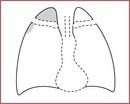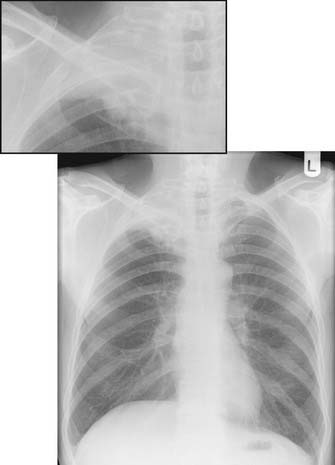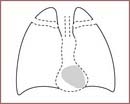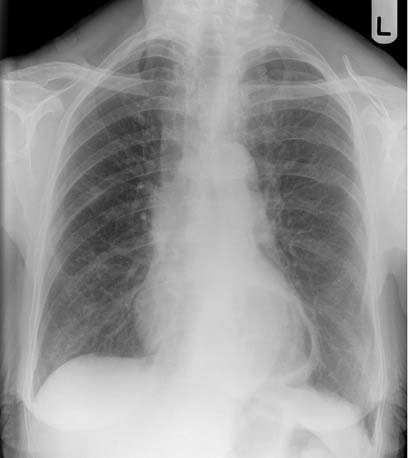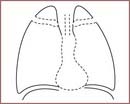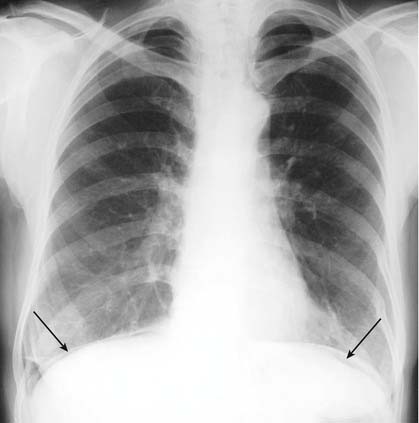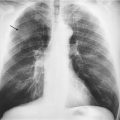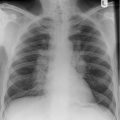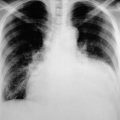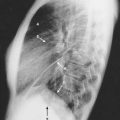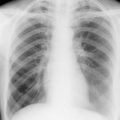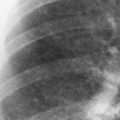CHAPTER 11 The hidden abnormality
11.1 Pancoast’s tumour
A number of abnormalities can be easily missed. Before deciding an X-ray is normal:
11.2 Hiatus hernia
When scanning an apparently normal X-ray it is important to look behind the heart. The heart is usually a fairly uniform white colour and areas of increased whiteness can indicate possible pathology. Therefore if you see an area of increased whiteness behind the heart:
11.3 Air under the diaphragm
Finish your examination of the chest X-ray by looking at the area under the diaphragm. The area immediately under the diaphragm will usually be white since the upper part of the abdomen contains the dense structures of the liver and spleen. Because of this you can usually only make out the upper surface of the diaphragm. You may see a darker round area under the left hemidiaphragm. This is the air bubble within the stomach.

